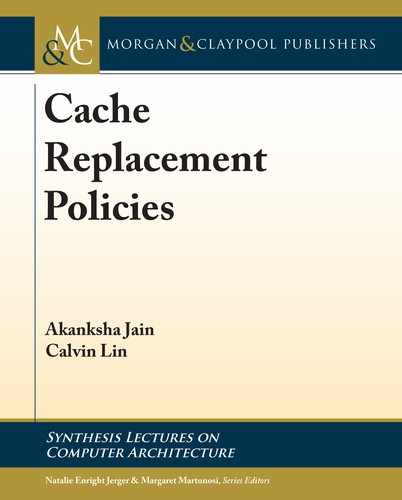
xiii
Preface
We have written this book for those who wish to understand the state of the art in cache re-
placement policies, so our goals are to explore the solution space and to organize the different
approaches that have been explored in the literature. In doing so, we also hope to identify trends
and issues that will be important in the future. We have intentionally chosen to focus on algo-
rithmic issues, and we focus on cache replacement policies for CPU data caches. While most of
the research that we discuss is performed in the context of last-level caches, where the benefits
of intelligent cache replacement are most pronounced, the general ideas often apply to other
levels of the cache hierarchy. After a brief introduction, Chapter 2 starts by defining our 2-
dimensional taxonomy of cache policies. e primary dimension describes the granularity of
replacement decisions, while the second one describes the metric that is used to make the re-
placement decisions. Chapters 3 and 4 then use our taxonomy to describe existing replacement
policies. Chapter 5 introduces other considerations that complicate cache replacement, includ-
ing data prefetchers, shared caches, variable miss costs, compression, and new technologies. We
conclude in Chapter 6 by using the results of the 2017 Cache Replacement Championship to
encapsulate recent trends, before stepping back and taking stock of larger movements and chal-
lenges for future research. We assume that readers have a basic undergraduate understanding of
computer architecture and caches, but this book will be useful for researchers at all levels.
Akanksha Jain and Calvin Lin
May 2019
..................Content has been hidden....................
You can't read the all page of ebook, please click here login for view all page.
